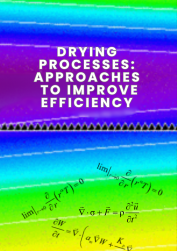Chapter 4. Drying of a porous layer in an external constant electric field (electroosmotic drying)
Synopsis
In this Chapter, mathematical modeling of the drying process of a porous layer under the influence of an external constant electric field is presented, taking into account the electroosmotic effects on mass and heat transfer. A mathematical model of electroosmotic drying is formulated based on the coupled equations of moisture transport, electrokinetic flow, and thermal effects. The analysis considers both natural and convective drying conditions, incorporating the impact of electroosmotic forces on moisture migration within the porous medium.
In the study, the fundamental mechanisms governing electroosmotic moisture removal are explored, including the formation of a double electric layer at the interface between the pore liquid and the solid skeleton, the competition between electroosmotic and capillary forces, and the transition between different drying regimes. A system of governing equations, including modified Stefan-Maxwell relations and generalized Darcy's law, is derived to describe the transport processes in the porous domain.
Numerical simulations are carried out. The experiments have demonstrated the effect of key parameters, such as electric field intensity, moisture content, temperature, and mass transfer coefficients, on drying kinetics. Results indicate that increasing the electric field intensity significantly accelerates moisture removal, particularly during the initial drying stage when electroosmotic forces dominate.


